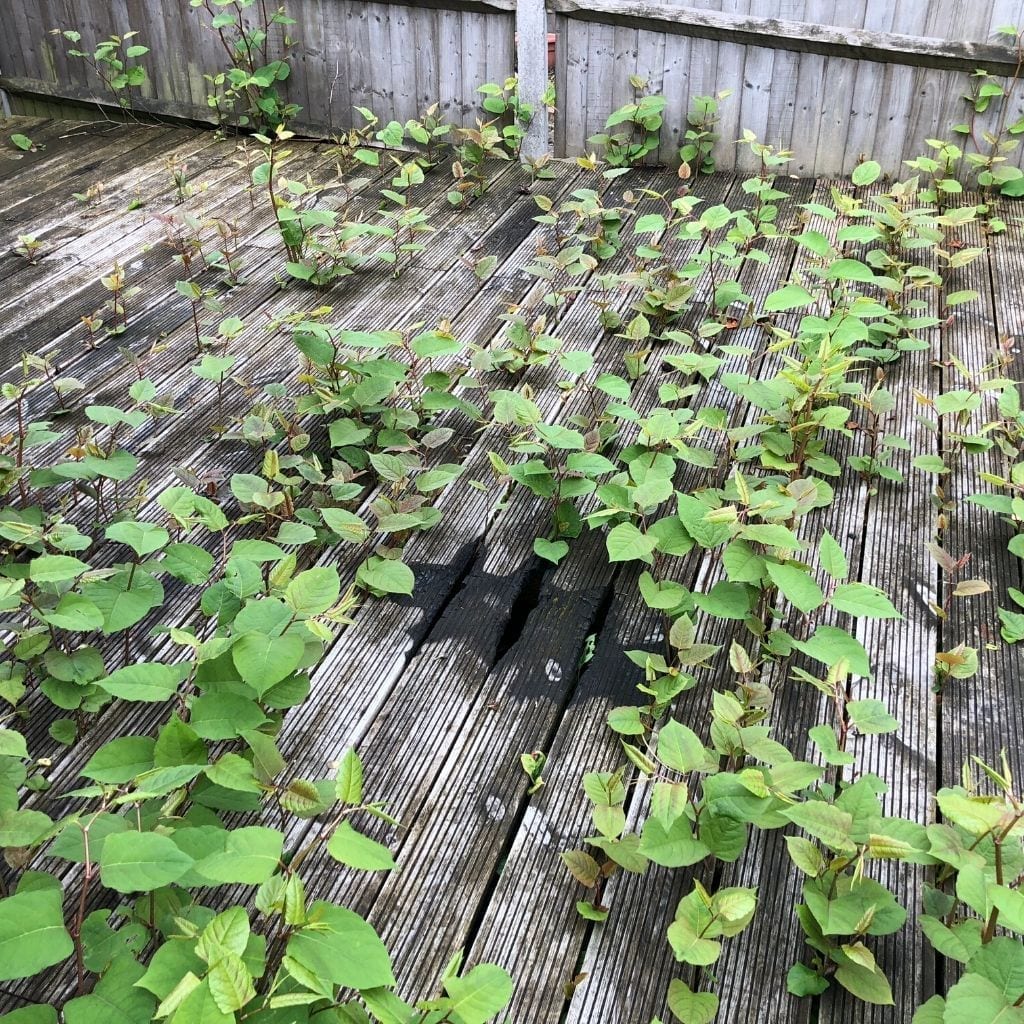
What is Japanese knotweed?
Japanese Knotweed, also known as Fallopia Japonica is a weed that has the potential to grow up to 20cm per day, causing devastating environmental problems. Not only this, but it can also ruin houses by destroying the exterior walls that surround the property. This can have devastating impacts on the value of the property and make it hard for buyers to get a mortgage. Japanese Knotweed was first brought into the UK in 1850- before it was known how damaging the plant can be and how rapidly it grows.
How does Japanese Knotweed spread?
It is rare that Japanese Knotweed produces seeds, but it does happen on occasion. You might be left wondering how the weed spreads so rapidly! Instead, Japanese Knotweed spreads through the nodes of green stem – water and soil is the perfect environment for the weed to grow! The dispersal of the rhizome fragments, stems and crowns make it easy for this plant to thrive under the UK’s climate. Despite being a huge problem in the UK, the weed isn’t as invasive in Japan as it propagates in a different manner. Taking the weed out of its natural habitat in 1850 was a big mistake as instead of spreading seeds like in Japan, it has learned to survive and spread through roots, stems and crowns.
Each of these infestive plants in the UK is supported by an underground system filled with stems, crowns and rhizomes which spread and send shoots to the surface. It doesn’t take much for a whole plant to grow like the weed can form a fully grown plant from a single rhizome as small as 10mm. This is why it is so important to dispose of Japanese Knotweed correctly, as it can so easily contaminate the ground by dumping it.
Where does Japanese Knotweed come from?
This weed does not simply just appear from nowhere. If you have spotted Japanese Knotweed on your premises, you can expect to find it in the surrounding areas. Try asking your neighbours if they have it in their garden, or have a look around your property to see if you can spot where the Japanese Knotweed is coming from. If you can not identify Japanese Knotweed nearby, there is a possibility that contaminated soil was dumped on your land, which could have been transferred via foot or on a car.
Can animals spread Japanese Knotweed?
Certain animals are able to spread Japanese Knotweed through their droppings. These animals include sheep, cattle and goats. It is unlikely that rhizome fragments will be the cause of new growth via droppings, however, their droppings could contain stems or canes. These can indeed survive the pass through the animals digestive system and form new growth when positioned back into the soil.
Where in the UK is contaminated?
It is to the point now where there are only a few places that the Japanese Knotweed hasn’t spread. A government-approved scheme has now been put into place to track the spread of the weed. The most contaminated areas are London, Birmingham, Leicester, Nottingham, Sheffield, Bristol, Cardiff, Swansea, Plymouth, Southampton, Brighton, Blackpool, Manchester, Leeds, York, Peterborough, Northampton, Southampton, Brighton and Newcastle.
How fast does Japanese Knotweed spread?
During the summer, Japanese Knotweed has been known to spread as much as 20cm per day. Although we know that it rapidly spreads above the ground, there has been no research conducted on what happens below the ground, yet we know that Japanese Knotweed can and does spread through its roots.
Thank you for reading our blog ‘How does Japanese Knotweed spread’. If you have spotted Japanese Knotweed and need to get it removed, we offer removal services with a 5-year warranty, take a look at our website today.


